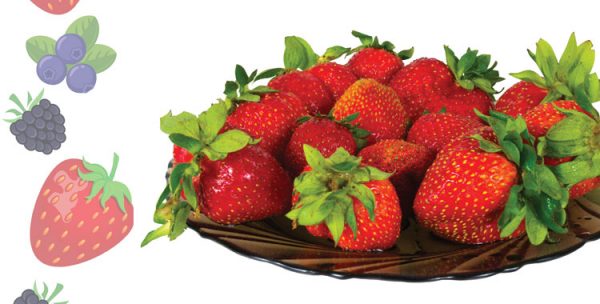Berry Delicious—and Good for Your Heart!
by BusinessWoman magazine / 0 Comments / 187 View / January 31, 2017
Not only are berries natural comfort foods and good for your brain, but research has also found that berries lower the risk of a heart attack, among other health benefits.
Want a delicious and easy way to reduce your risk of a heart attack? Eat blueberries and strawberries at least three times a week.
A study published in the medical journal Circulation followed 94,000 women for 18 years and found that those who ate the most berries cut their chances of a heart attack by one-third.
The reason: Blueberries and strawberries (along with blackberries, black currants, and eggplant) are rich in compounds called anthocyanins, which widen arteries and reduce inflammation.
Berries are considered to be superfoods because they offer so many health benefits: They’re low in calories and contain vitamins, minerals, and antioxidants that can fight cancer, heart disease, diabetes, high cholesterol levels, high blood pressure, and arthritis.
Berries also boost memory and keep neurons healthy. Because they’re mostly made of water and rich in fiber, they also fill you up while keeping your calories down, so they can help you lose weight.
We can now find fresh berries in our supermarkets all year long (although summer is the peak buying time). To select, store, and serve berries, Driscoll’s, the leading supplier of fresh berries in the United States, offers these tips:
Select – Look for plump, brightly colored berries with no sign of rotting, denting, or bruising. Avoid strawberries with wilted caps, seedy tips, or white shoulders. Turn the package over to make sure the berries on the bottom look as good as those on top. (I also give the package a whiff to make sure they have a nice berry smell; if they don’t, I put the basket back.)
Store – Berries last only a few days after purchase (raspberries typically last one to two days, while blueberries are good for up to seven days), so it’s important to store them properly and consume them quickly. Refrigerate them in their original packaging until you’re ready to eat them, and then wash them gently in cold water.
Serve – Berries taste best chilled and can be eaten by themselves, as part of a fruit salad, or in any number of dishes, from fruit smoothies to yogurt parfaits, pancakes, salads, and even to add some zest to drinking water.
And don’t forget—frozen berries are just as nutritious as fresh berries and less pricey and more reliable at this time of year. Conveniently, they can be used straight from the freezer in smoothies, oatmeal, crisps, and muffins or for breakfasts, snacks, or desserts. For recipes, go to Allrecipes (www.allrecipes.com).
Recipe: The More the Berrier!
Here’s a fast, simple recipe from Driscoll’s (www.driscolls.com) for a delicious, berry-based dessert.
Makes six servings; approximately 200 calories per serving (100 if made with Splenda)
• 4.4 ounces blueberries
• 6 ounces raspberries
• 6 ounces blackberries
• 6 ounces strawberries cut into small pieces
• 6 tablespoons water
• 1/4 cup of sugar (or granulated Splenda)
• ½ pound cake (or lady fingers or dessert shells)
• Whipped cream
1. Combine the berries, sugar or granulated Splenda, and water in a saucepan and cook, stirring frequently, over medium heat for 2 to 3 minutes (until the berries start to release their liquid). Then bring to a boil, stirring occasionally, for about 5 minutes until the mixture thickens. Remove the saucepan from the heat.
2. Line a small bowl with thin slices of pound cake (or ladyfingers or dessert shells) on the bottom and sides and spoon the mixture over the cake.
3. Refrigerate for 2 hours or more. Top with whipped cream and serve! BW
Nancy Monson is a health and creativity coach and the author of Craft to Heal: Soothing Your Soul with Sewing, Painting, and Other Pastimes. Her articles on health and nutrition have been published in over 30 national magazines. Visit her website at www.nancymonson.com.


Your Commment
You must be logged in to post a comment.